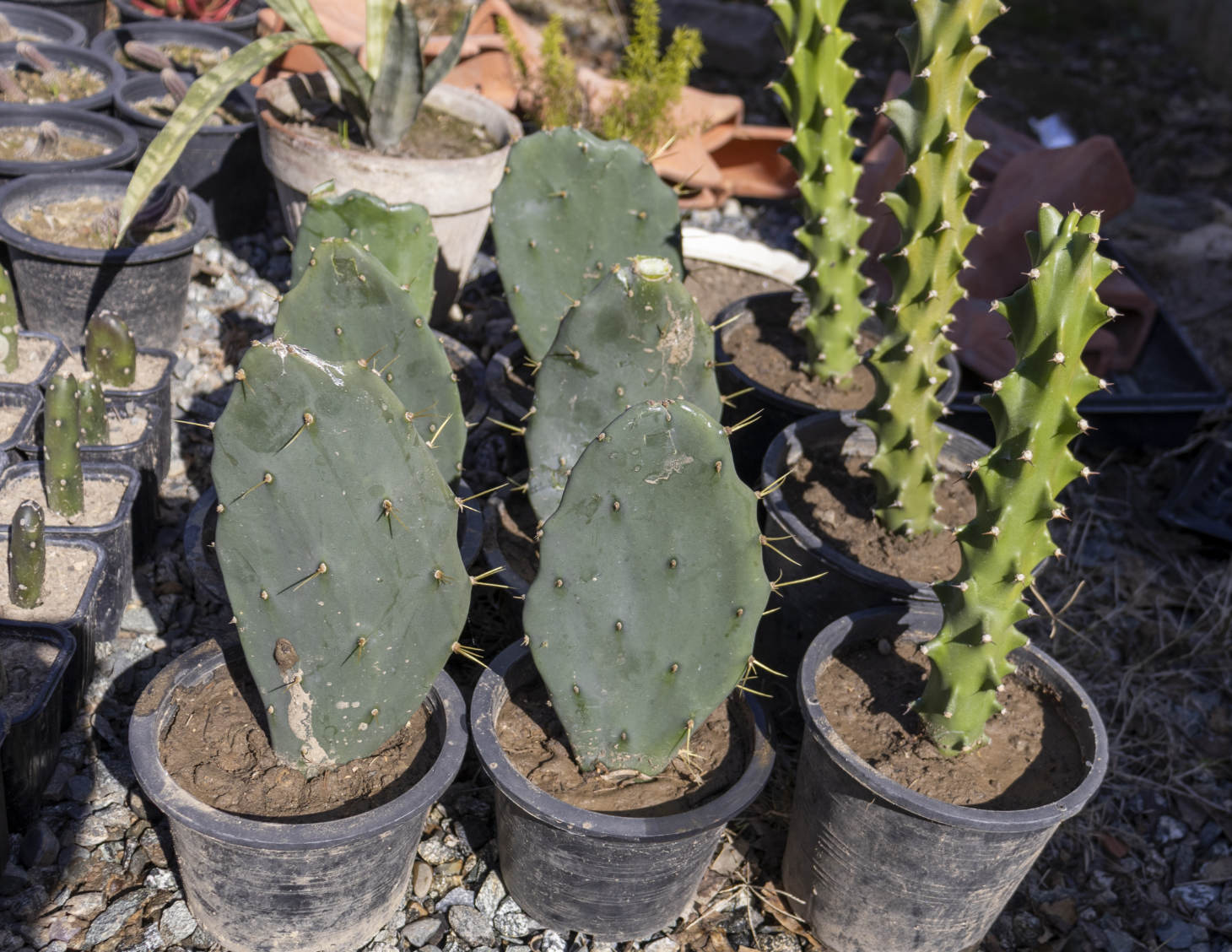How Does a Cactus Reproduce?
Cacti are fascinating desert plants with unique ways of ensuring their survival through reproduction. These spiny plants have adapted to harsh environments by developing multiple methods to create new plants. Cacti reproduce both sexually through flowers and seeds, and asexually through segments or pads that break off and grow into new plants.
Have you ever noticed a piece of cactus on the ground that later sprouted roots? This is no accident. Many cacti, especially prickly pears and chollas, have stems with weak connections that easily break off when bumped by animals or blown by wind. These segments can root where they touch the ground, creating a genetic copy of the parent plant without needing pollination.
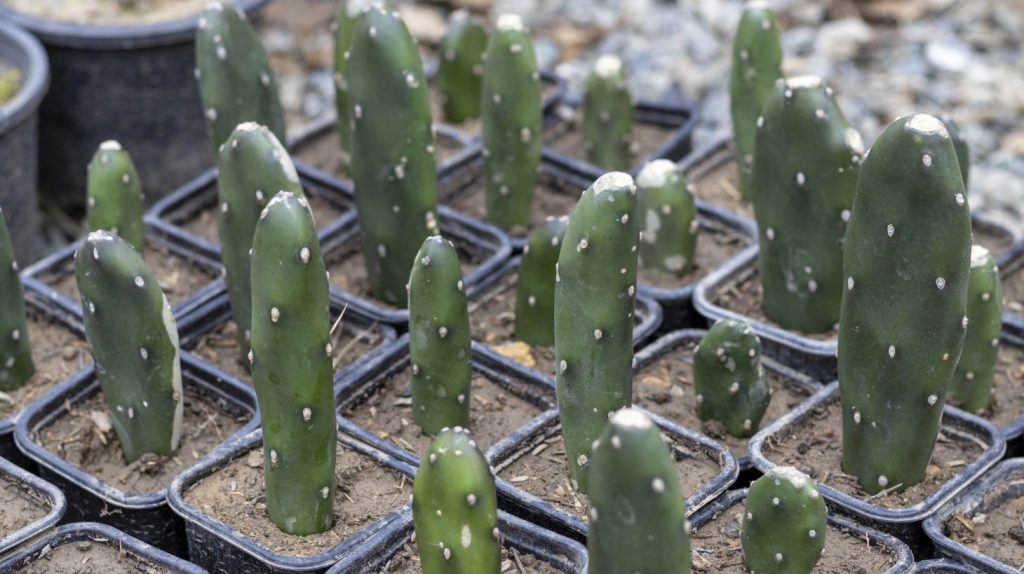
For sexual reproduction, cacti produce often spectacular flowers that attract pollinators like bees, moths, and bats. After successful pollination, these flowers develop into fruits containing seeds. When conditions are right, these seeds germinate and grow into new cacti with genetic traits from both parent plants.
Key Takeaways
- Cacti reproduce sexually through flowers and seeds, allowing for genetic diversity in their offspring.
- Many cacti also reproduce asexually when segments or pads fall off and root in the ground.
- You can propagate cacti at home using cuttings, offsets, seeds, or grafting techniques.
The Basics of Cactus Reproduction
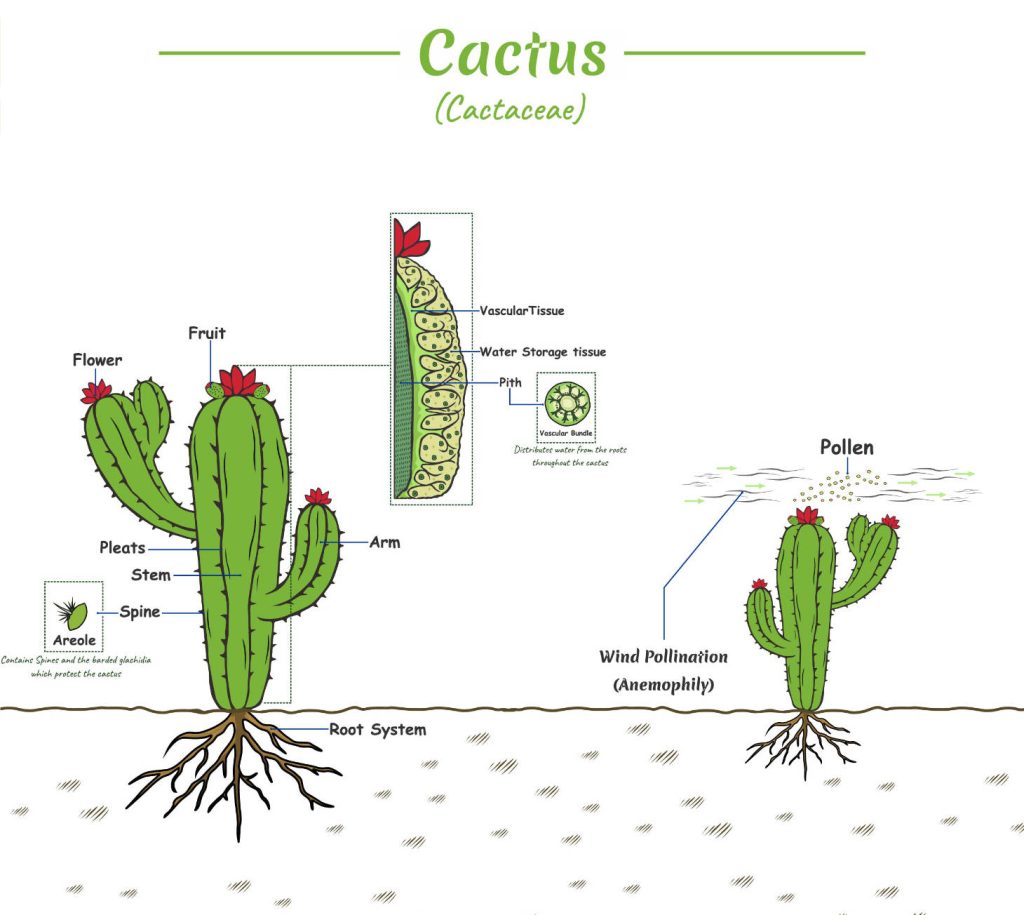
Cacti reproduce in two main ways: sexually through flowers and seeds, and asexually through fallen segments that root themselves. Understanding these processes helps explain how these desert plants spread and survive in harsh conditions.
Cactus Anatomy and Reproductive Structures
Cacti have specialized structures that help them reproduce. Areoles are small, cushion-like areas on the cactus surface that produce spines, flowers, and new growth. These unique structures are found only on cacti and play a crucial role in reproduction.
Most cacti develop colorful flowers that contain both male parts (stamens) and female parts (pistils). The flowers range from tiny to spectacular blooms that can reach several inches across.
Spines protect the plant but also help with reproduction by catching on passing animals, sometimes carrying small segments of the plant to new locations. Some cacti also have glochids, which are tiny barbed spines that detach easily.
Sexual Reproduction Process
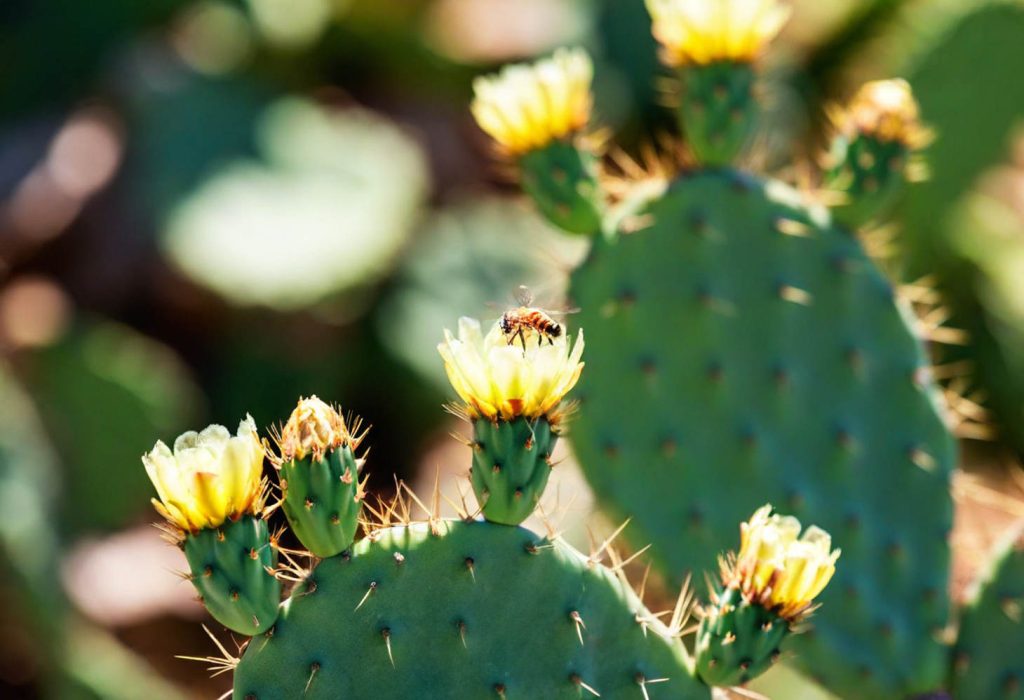
Sexual reproduction in cacti begins with flower development. Flowers typically bloom for just a few days, often opening at specific times to attract pollinators like bees, bats, or birds.
When pollinators visit the flowers, they transfer pollen from the stamens to the pistils. This fertilization process leads to seed development inside fruits. Cactus fruits are often brightly colored and sweet to attract animals.
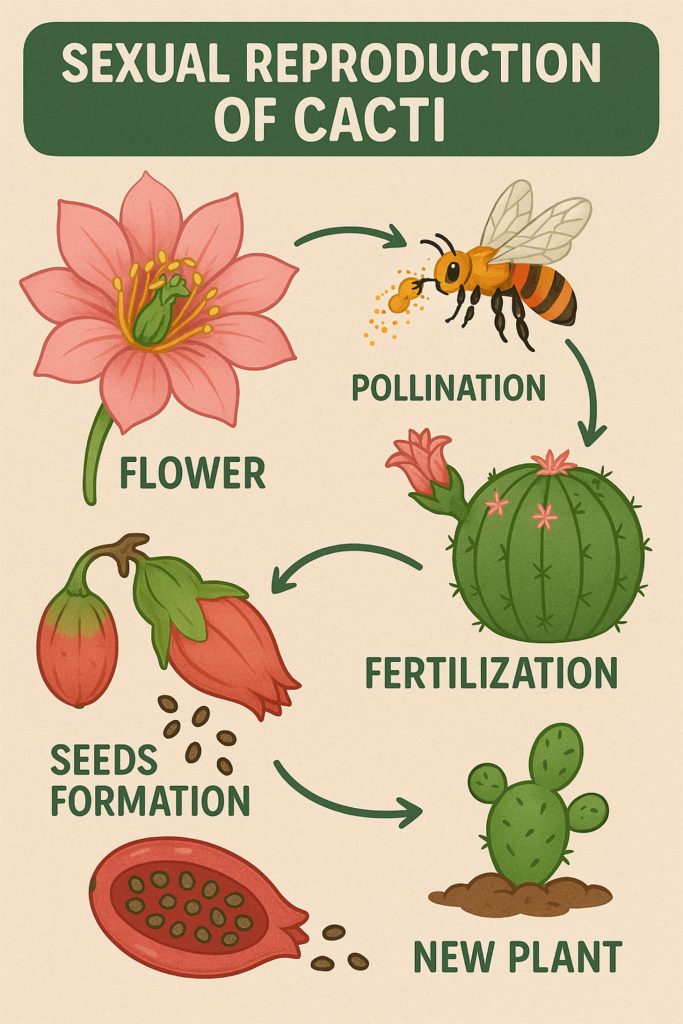
Animals eat the fruits and disperse the seeds through their droppings. The seeds can remain dormant for years until conditions are right for germination. When rain finally comes, the seeds absorb water and begin to grow into new plants.
Asexual Reproduction Mechanisms

Cacti excel at asexual reproduction, which doesn’t require pollination. The most common method is when pads or segments break off and root where they touch soil. This creates a genetically identical clone of the parent plant.
Some species produce offsets or “pups” that grow at the base of the main plant, along the stem, or on the pads. You can separate these once they’re large enough to survive on their own.
Grafting is another reproduction technique where you attach a piece of one cactus to another. This method is useful for propagating rare varieties or helping weak species thrive.
Many home gardeners propagate cacti by taking cuttings. You simply cut off a healthy segment, let the cut end dry and callus for a few days, then place it in soil where it will develop roots.
Cactus Propagation Techniques
Cacti can be propagated through several methods that allow you to expand your collection without spending money. These techniques require specific soil conditions, proper growing environments, and careful handling of plant material.
Soil Composition and Preparation
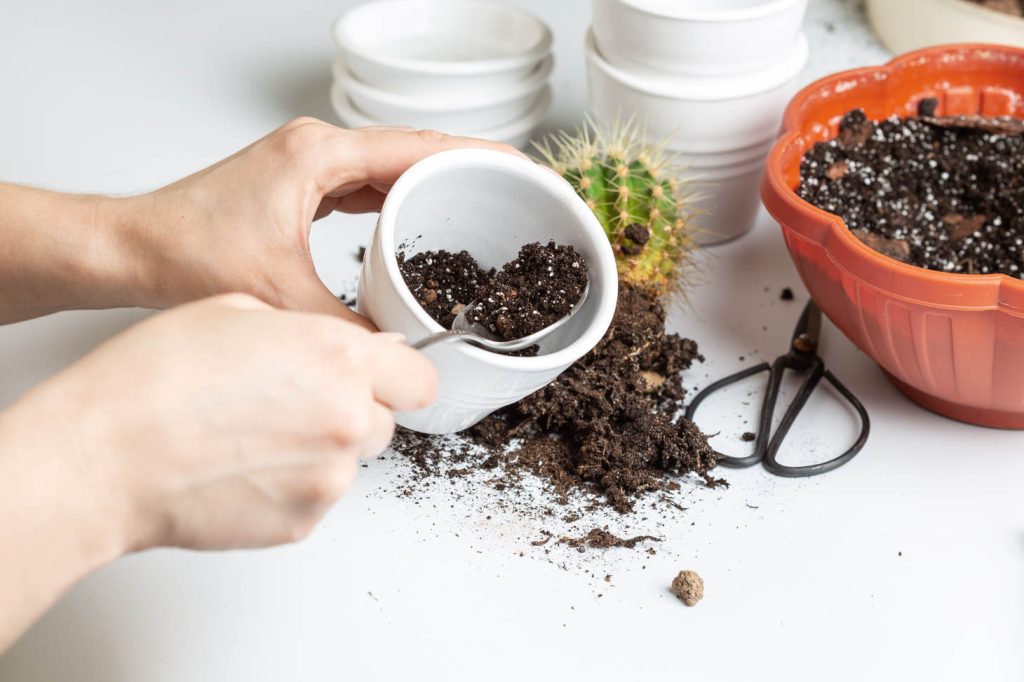
The right soil mix is crucial for successful cactus propagation. You should create a mixture that provides excellent drainage to prevent root rot. A good cactus propagation mix typically contains:
- 3 parts potting soil
- 3 parts coarse sand
- 2 parts perlite or pumice
This combination ensures proper drainage while retaining just enough moisture for root development. Before using any containers for propagation, make sure they have drainage holes at the bottom.
Pre-moisten the soil mix slightly before planting. It should feel barely damp to the touch, not wet. For cuttings or offsets, let the soil dry out between light waterings to encourage root growth rather than rot.
Growing Conditions for Successful Propagation
Cacti need specific conditions to root and grow properly during propagation. Place your propagation containers in a spot with bright, indirect sunlight. Direct sun can burn new growth and damage delicate seedlings.
Temperature is important for successful propagation. Most cacti prefer:
- Daytime: 70-85°F (21-29°C)
- Nighttime: 50-55°F (10-13°C)
Humidity levels should be low during the initial rooting phase. You can cover seedlings with clear plastic to create a mini-greenhouse effect, but allow for some airflow to prevent mold.
Remember that many cacti use Crassulacean Acid Metabolism (CAM) photosynthesis, which means they absorb carbon dioxide at night rather than during the day. This adaptation helps them conserve water.
Seeding and Cuttings Practices
Growing cacti from seeds requires patience but yields many plants. Sprinkle seeds on top of your prepared soil mix and cover them with a thin layer of fine sand. Depending on the species, seeds typically germinate within a few days to several months, with cactus seed germination optimally occurring at temperatures ranging from 20-35°C (68-95°F).
Propagation from cuttings is faster and easier. To start:
- Cut a healthy segment or pad from the parent plant
- Allow the cutting to callus, typically 2-7 days, in a dry location
- Place the callused end into slightly damp soil mix
- Wait 4-8 weeks for roots to form before light watering
Offsets (baby cacti growing from the parent) can be carefully removed and planted directly into soil. These already have small root systems and establish quickly.
Water propagated plants sparingly, increasing frequency only after you see new growth, which indicates successful root development.
Special Topics in Cactus Reproduction
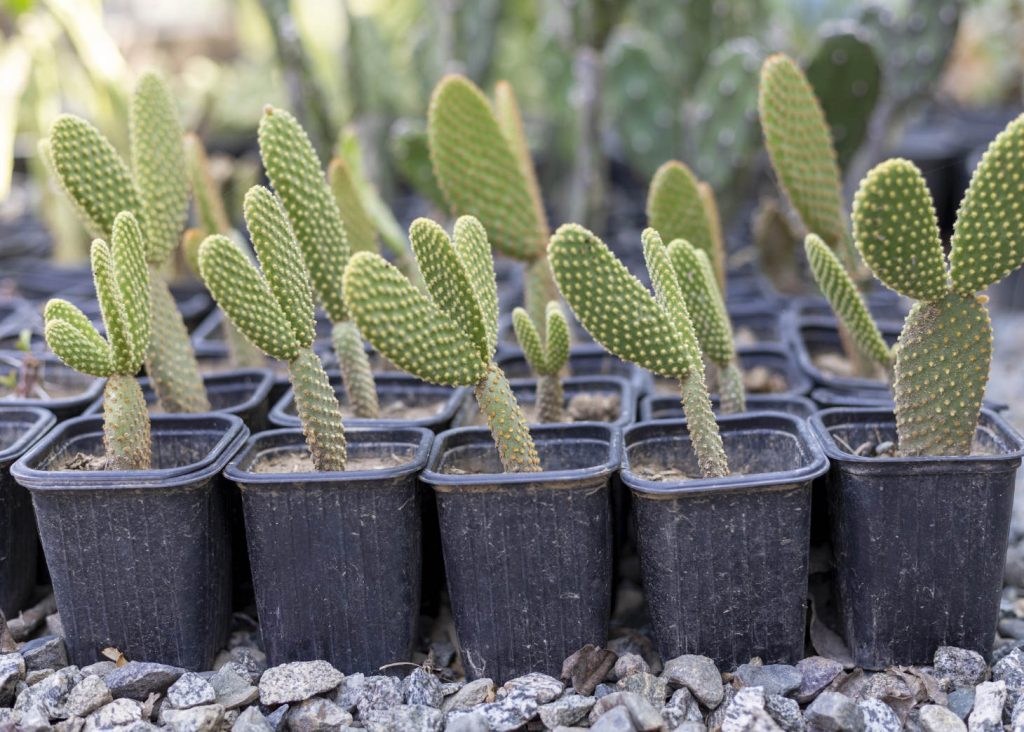
Cacti have evolved fascinating reproductive strategies to survive harsh desert environments. These adaptations ensure their survival through both sexual and asexual methods while maintaining genetic diversity.
Unique Adaptations in Reproduction
Cacti have developed remarkable reproductive adaptations to thrive in harsh conditions. Many species practice Crassulacean Acid Metabolism (CAM), which allows them to open their stomata at night to conserve water, which is essential for their survival in arid environments. This adaptation is crucial for flower production in dry climates.
Epiphytic cacti, like the Christmas cactus, have evolved to grow on other plants rather than in soil. These species reproduce differently from their desert counterparts, often dropping segments that root when they touch a suitable surface.
Some cacti produce viviparous seeds that germinate while still attached to the parent plant. This gives seedlings a head start in challenging environments.
You’ll notice that many desert cacti produce large, colorful flowers that bloom for just a single day or night to attract specific pollinators.
Genetic Diversity and Hybridization
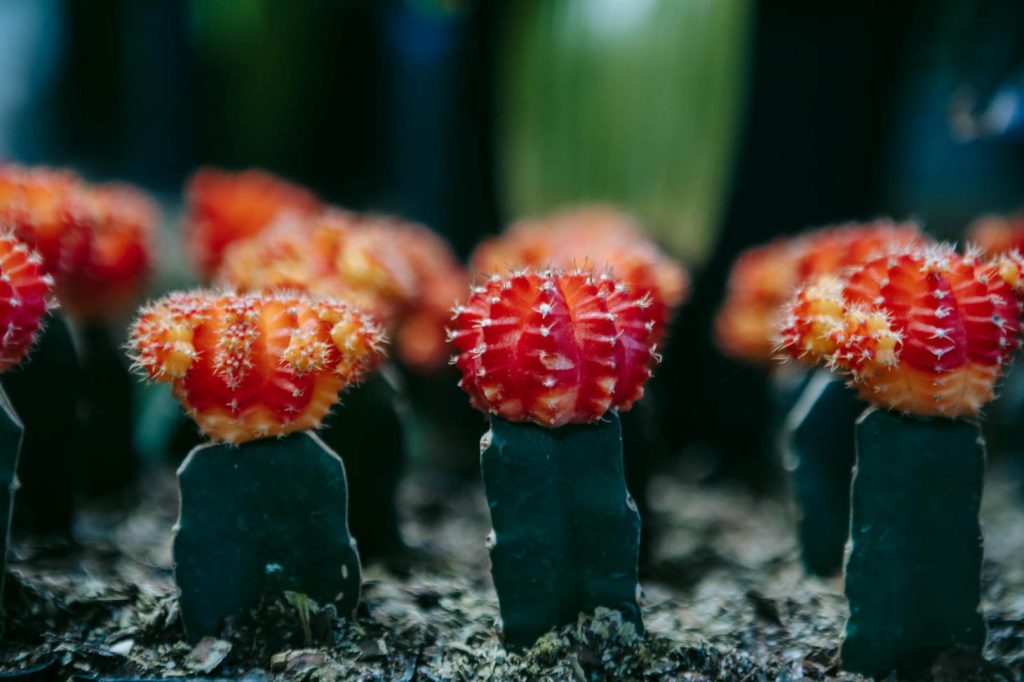
Cacti maintain genetic diversity through various mechanisms despite harsh living conditions. Cross-pollination between different plants helps introduce new genetic combinations, making populations more resilient to environmental changes.
Hybridization occurs naturally when closely related species grow near each other. You can see this in the diverse colors and forms of many commercially available cacti. Plant breeders have expanded on these natural processes to create new varieties with desired traits.
Common Hybridization Benefits:
- Increased survival rates
- Novel flower colors
- Improved growth habits
- Better tolerance to varied conditions
Grafting, though not reproduction in the strict sense, allows propagators to combine the desirable qualities of different cacti. You might find colorful mutants like red or yellow cacti grafted onto stronger rootstock species.
Conservation Through Reproduction
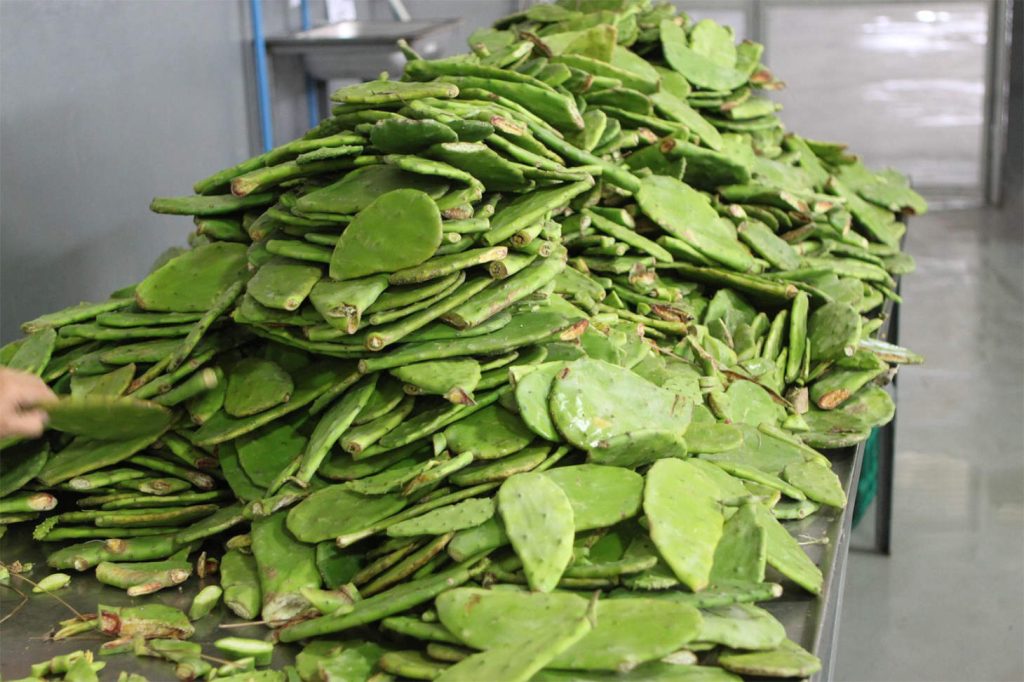
Many cactus species face extinction threats due to illegal trade and habitat loss. Understanding their reproduction is vital for conservation efforts.
Seed banks preserve genetic diversity by storing seeds from endangered cacti species. You can support these efforts by purchasing only legally propagated plants from reputable nurseries rather than wild-collected specimens.
Ex-situ conservation programs use both sexual and asexual reproduction techniques to maintain populations of rare cacti outside their natural habitats. Botanical gardens often maintain living collections that serve as genetic reservoirs.
Tissue culture techniques have revolutionized conservation by allowing rapid multiplication of rare species. This method produces many genetically identical plants from a small amount of tissue, helping restore depleted wild populations.
Community-based conservation projects teach sustainable harvesting and propagation techniques to local communities, ensuring both human livelihoods and cactus survival.

